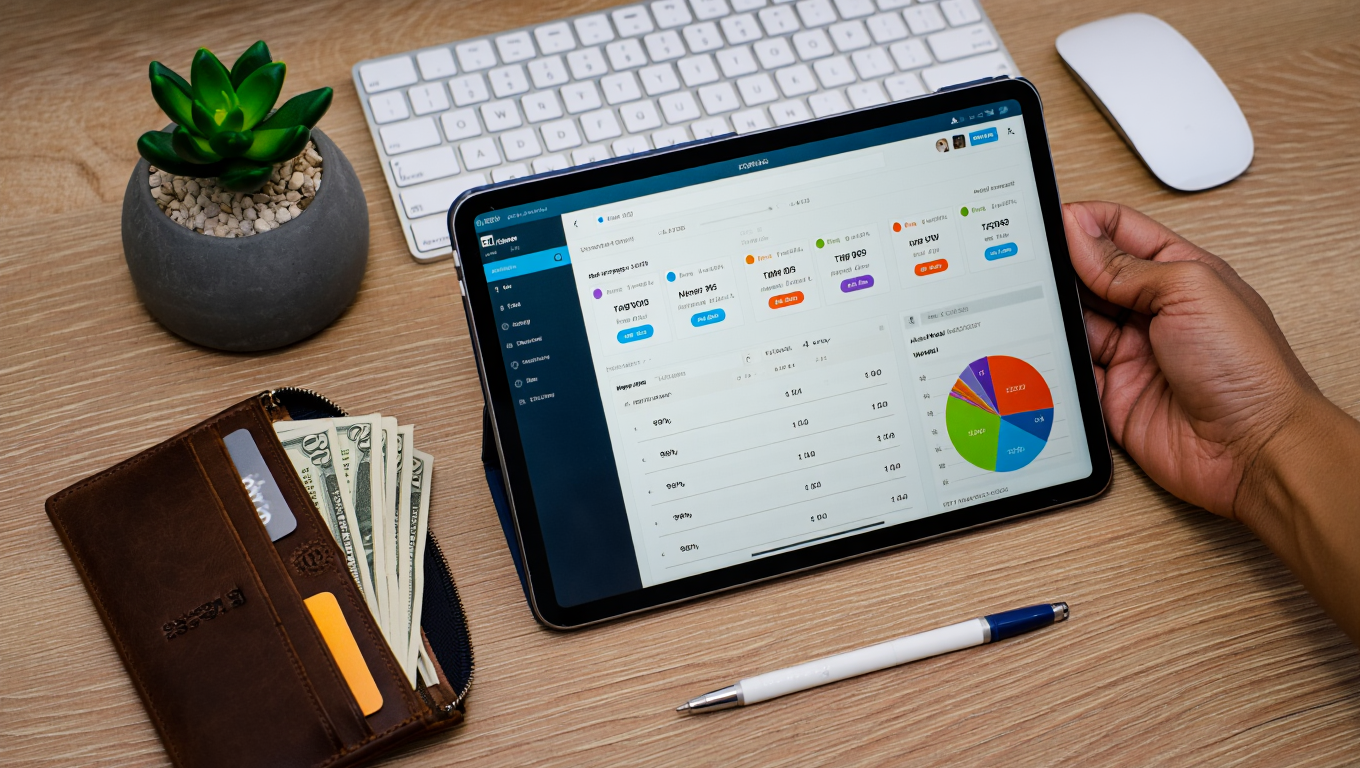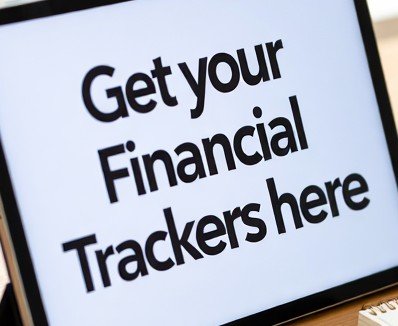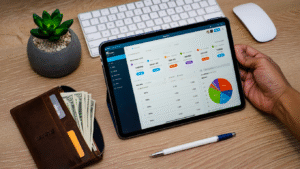
Let’s be honest: budgeting usually gets a bad rap.
For many people, it sounds restrictive, complicated, or just plain boring.
But here’s the truth:
A good budget isn’t about punishment. It’s about freedom—freedom to reach your goals, feel less stressed, and take control of your money in a way that actually fits your life.
The key?
Create a budget that works for you—not your neighbor, not your favorite finance influencer, but you.
Ready to build a budget that finally sticks?
Here’s your complete roadmap:
Step 1: Set Clear, Meaningful Financial Goals 🏁
Before you even open a spreadsheet or calculator, stop and think:
Why are you budgeting in the first place?
Your goals give your budget real purpose. Without them, it’s easy to lose motivation.
✅ Some common financial goals include:
- Paying off credit card debt or student loans
- Saving for a dream vacation, home, or car
- Building a 3–6 month emergency fund
- Investing for retirement or financial independence
- Increasing your monthly cash flow
🖊️ Action Step:
Write down 2–3 short-term goals (next 6–12 months) and 1–2 long-term goals (next 1–5 years).
🔎 Pro Tip: Make your goals SMART (Specific, Measurable, Achievable, Relevant, Time-bound) for best results.
Step 2: Calculate Your True Monthly Income 💵
Now, let’s talk about what you’re working with each month.
When budgeting, focus on your actual take-home income after taxes—not your gross salary.
Include:
- Salary or hourly wages
- Freelance, side gig, or business income
- Rental income or child support
- Passive income (dividends, royalties, etc.)
📉 If your income fluctuates:
Take an average of the last 3–6 months, and plan using the lowest month as your base.
This ensures you’re never caught short during a slower month.
Step 3: Track and Categorize Your Expenses 📋
To build a realistic budget, you need a clear picture of where your money is actually going.
Break down your monthly expenses into three main categories:
1. Fixed Expenses (Essentials you must pay)
- Rent or mortgage
- Utilities
- Insurance premiums
- Subscriptions (Netflix, Spotify, etc.)
2. Variable Expenses (Costs that change month to month)
- Groceries
- Transportation (gas, public transit)
- Dining out
- Entertainment
- Shopping
3. Financial Goals
- Debt repayments
- Savings contributions
- Investments
🔎 Action Step:
Use a budgeting app, spreadsheet, or even a notebook to track everything.
You’ll be surprised where those “little” expenses add up.
Step 4: Choose the Right Budgeting Method for Your Life 🔥
Not all budgets are created equal.
The best budgeting style is the one you’ll actually stick with.
Here are three proven methods to consider:
1. 50/30/20 Rule
- 50% for Needs (housing, food, transportation)
- 30% for Wants (dining out, entertainment)
- 20% for Savings and Debt Repayment
✔️ Simple, flexible, and perfect for beginners.
2. Zero-Based Budget
Every dollar gets assigned a job until your income minus expenses equals $0.
✔️ Best if you like detailed control and accountability.
3. Pay Yourself First
You prioritize savings and investments first, then spend what’s left.
✔️ Perfect if your main goal is building wealth and creating long-term financial security.
🖊️ Action Step:
Pick a method that fits your lifestyle and money mindset.
You can always tweak it as you go!
Step 5: Monitor Your Spending (Consistency is Key) 📈
Tracking your expenses regularly is where your budget goes from theory to reality.
Without monitoring, your budget is just a good guess.
Here’s how to make it easy:
- Update your spending once a week (it only takes 10–15 minutes)
- Use a budgeting app like YNAB, Mint, or a simple Google Sheet
- Check your bank and credit card statements weekly
📌 Remember:
Small leaks sink big ships. Catch overspending early before it derails your progress!
Step 6: Review and Adjust Monthly 🔄
Life changes—and so should your budget.
Review your progress monthly to make necessary tweaks.
During your monthly review, ask:
- What categories went over budget?
- What savings goals did I hit?
- What changes (income, bills, habits) are coming up?
🖊️ Action Step:
Set a calendar reminder for a 30-minute “Budget Review Day” once a month. Bring snacks. Make it fun!
🔎 Pro Tip: If something isn’t working (like always overspending on food), adjust your category instead of beating yourself up.
Step 7: Make Your Budget Sustainable Long-Term 🌱
A budget you hate is a budget you won’t stick to.
Build a plan that supports both your goals and your lifestyle.
Here’s how to keep it sustainable:
- Budget for fun! (Yes, really. Life’s meant to be lived.)
- Celebrate small wins—new savings record? Reward yourself!
- Keep your goals visible with vision boards, sticky notes, or phone lock screens.
- Don’t let one “bad” month make you quit. Adjust, learn, and keep moving forward.
🎯 Success Tip:
Budgeting isn’t about being perfect. It’s about being intentional with your money.
📊 Quick Infographic Summary (Save This!)
| Step | What to Do | Why It Matters |
|---|---|---|
| 1 | Set Financial Goals | Give your budget purpose |
| 2 | Calculate Income | Know your real money |
| 3 | List Expenses | Find spending leaks |
| 4 | Choose a Budgeting Method | Make it fit your lifestyle |
| 5 | Track Weekly | Stay accountable |
| 6 | Adjust Monthly | Keep it realistic |
| 7 | Make it Fun and Sustainable | Stay motivated long-term |
🔥 Final Thoughts: Your Budget, Your Rules
Creating a budget that actually works for you isn’t about deprivation—it’s about freedom.
It’s about making sure your money reflects your priorities and dreams.
With the right tools, goals, and mindset, you’ll stop feeling like money controls you—and start feeling like you control your money.
You’ve got this. 🙌
🌟 Bonus: Want to Make Budgeting Even Easier?
👉 Download one of our ready-to-use budget templates, built for clarity, flexibility, and long-term success.


